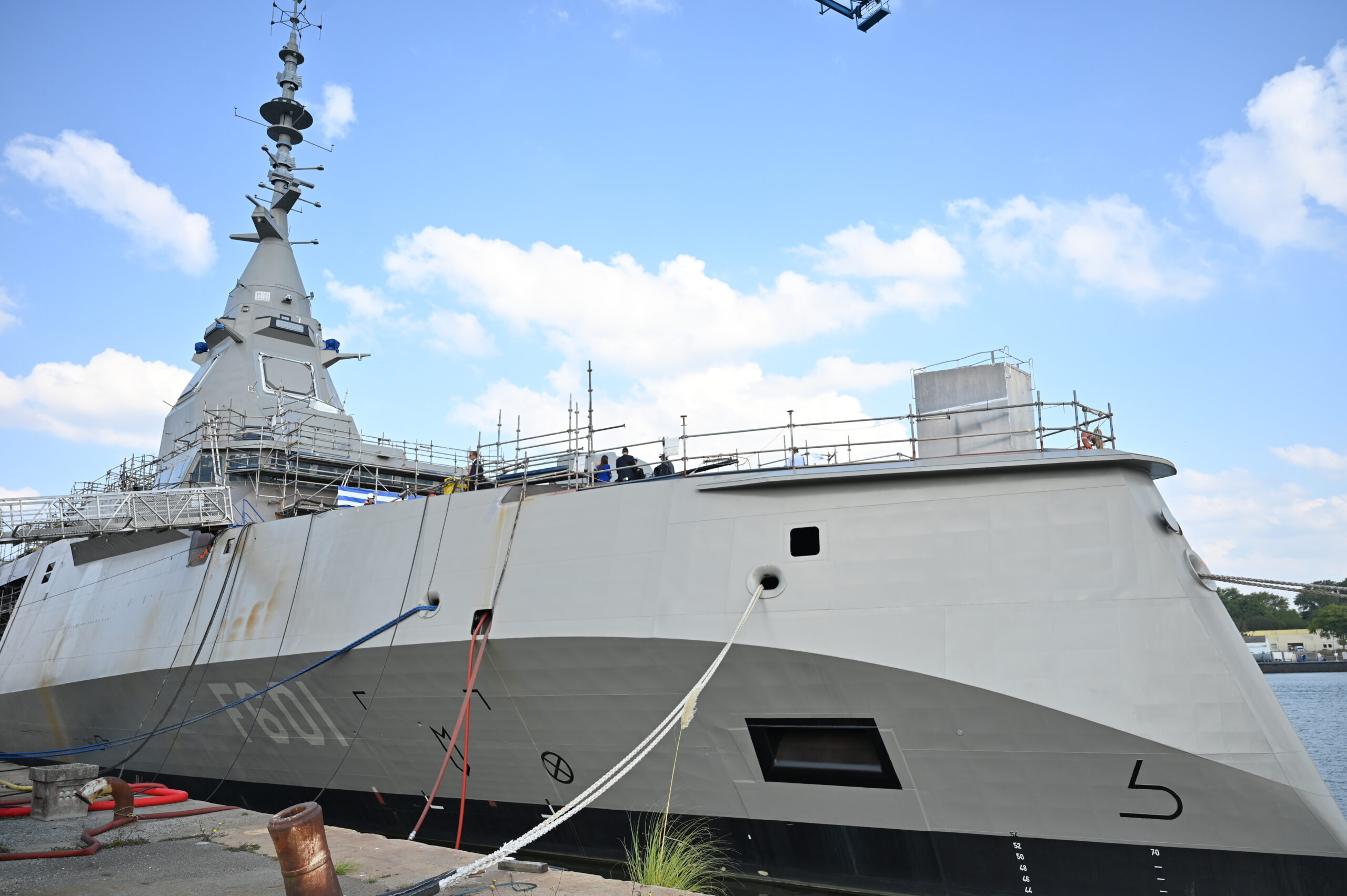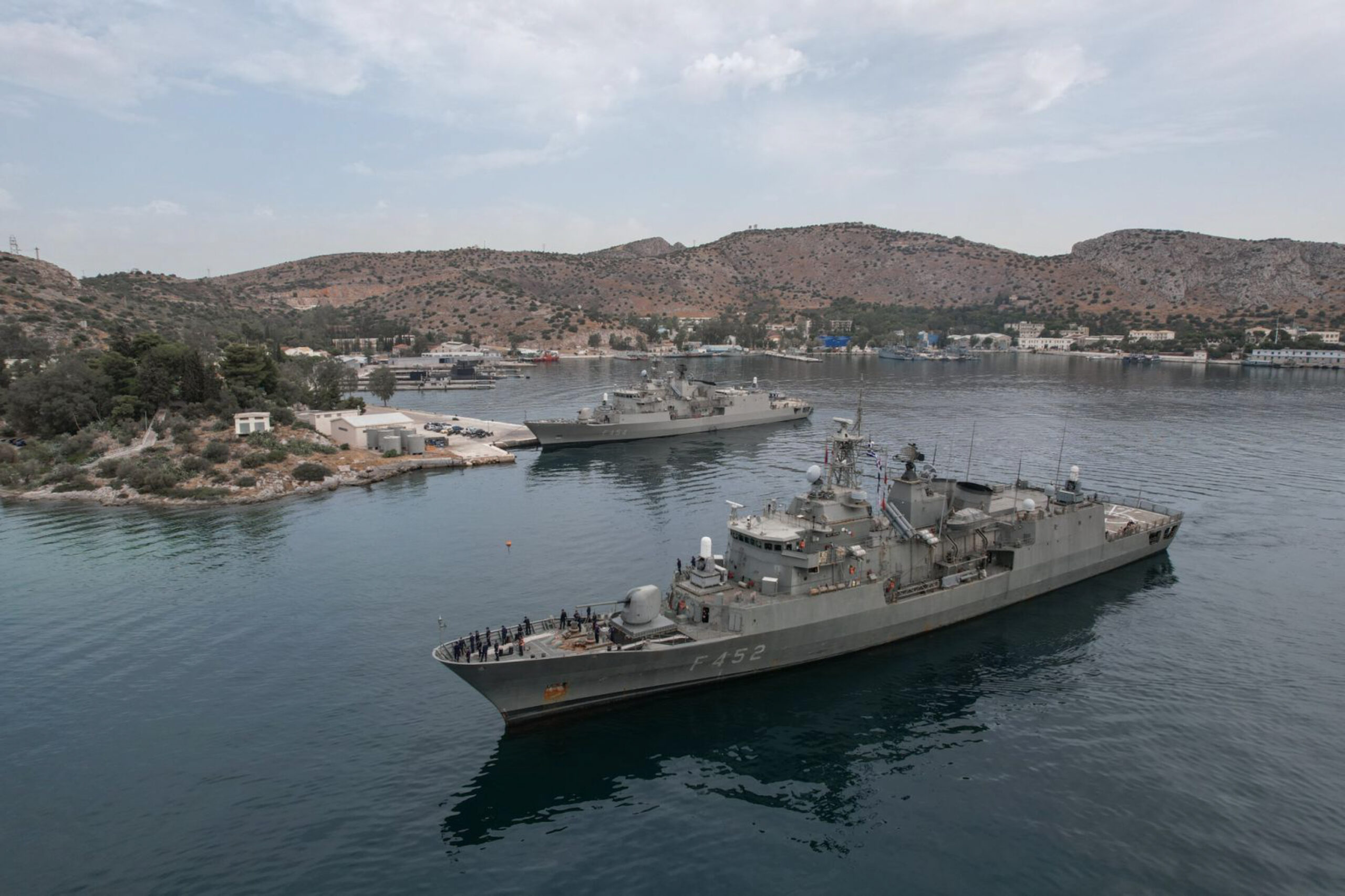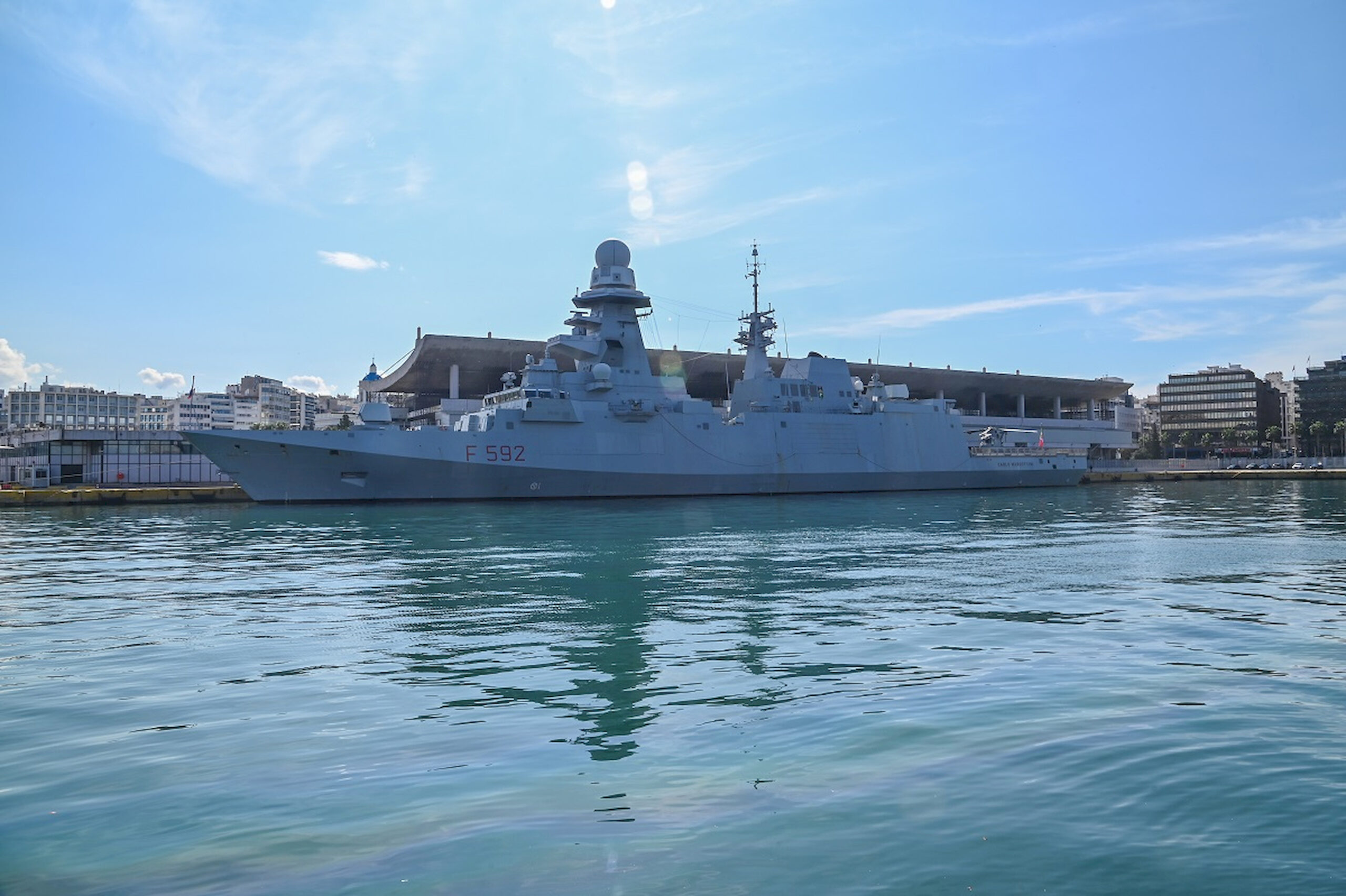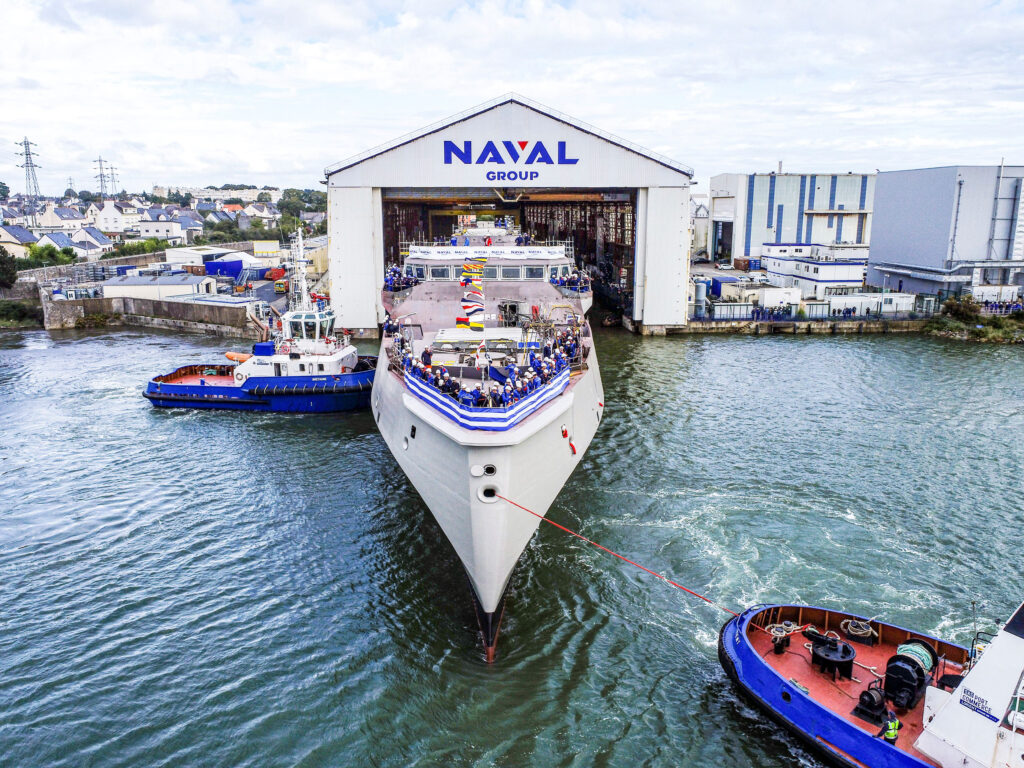After securing air superiority over Turkey with the acquisition of Rafale and F-35 fighter jets, Athens is moving rapidly to restore balance at sea. The military and political leadership of the Ministry of National Defense is decisively strengthening the Hellenic Navy, aiming to enhance Greek presence in the Aegean and Eastern Mediterranean. During a period of increased operational requirements and under the burden of an aging fleet, 2026 is expected to be a milestone year: The three Belharra frigates will have been integrated into the Navy’s force, the modernization of four MEKO frigates will be in full progress, and seven helicopters – “submarine hunters” – will be operational.
Read also: Armed Forces: Dendias’ exemplary salary “model” – Staff compensation increases won’t burden state coffers
The first major step in strengthening naval forces will be the integration of the first Belharra frigate. “In a few weeks, the ‘Kimon’ will dock at Faliron Bay, the first next-generation frigate, the first Belharra (FDI), and three more will follow,” declared Defense Minister Nikos Dendias at the inauguration ceremony of the Naval Academy’s Medical Center last Tuesday. After “Kimon,” “Nearchos” will follow in spring 2026 and “Formion” in autumn of the same year, while the fourth Belharra, to be named “Themistocles,” is expected – once the relevant contract is signed – to join the Navy by 2028.
The Belharra frigate “Kimon” at sea
@parapolitika The Belharra frigate “KIMON” took to the open sea #parapolitikagr #tiktokgreece #greece ♬ original sound – Parapolitika.gr
The Belharra frigates are expected to significantly enhance the deterrent capability of the Greek fleet thanks to their high-level capabilities across all naval warfare domains: anti-air, anti-submarine, anti-ship, and power projection, with unique capabilities against asymmetric threats. The FDI-type frigates benefit from the latest innovations in radar, sonar, and electronic warfare. Designed and built with cutting-edge digital tools, they are the first frigates to benefit from an onboard digital architecture that will allow them to continuously adapt to technological and operational developments, enabling them to address constantly evolving threats.

The arrival of Belharra “Nearchos” is expected in spring 2026
Regarding operational innovation, the FDI inaugurates the concept of a computer gateway dedicated to combating asymmetric threats. This system will enable coordination and guidance in fighting small, close-range aerial and surface threats.
The frigate “Formion”
By April 2026, four more MH-60 Romeo helicopters will have been delivered, bringing the Navy’s “submarine hunter” fleet to seven. With advanced sonar, sonobuoy deployment capability, and armament including torpedoes and guided missiles, the Romeo helicopters are considered top-tier in anti-submarine warfare and constitute Greece’s answer to Turkey’s new Type 214 submarines. Through data links, they connect in real-time with frigates and Air Force fighters, enhancing operational cohesion. As organic helicopters of the Belharra frigates, they will undertake fleet protection, while military leadership is examining parallel enhancement with electronic warfare systems to counter unmanned threats.

With seven “submarine hunters,” the MH-60 Romeo helicopters, Greek forces will “scan” the Aegean
After a long time, necessary recommendations and lengthy consultations between political and military leadership, the modernization of the aging MEKO-type frigates – which despite their age provided and continue to provide security for free passage of commercial vessels east of the Gulf of Aden within the European operation “Aspides” – enters implementation “trajectory.” According to the plan, the first contracts are expected to be signed by year’s end, while work on the first frigate is scheduled to begin in early 2026. The modernization program extends until late 2030, when all four MEKO frigates will have returned fully upgraded to the fleet’s active strength.

By late 2030, the “facelift” for Hydra-class MEKO frigates
To cover the gap in hulls, the Ministry of National Defense is turning to used Italian FREMM-type frigates (“Bergamini”), aiming to acquire two vessels in 2028-2029 with an option for two more after 2030. “In the next 45 days we may reach a point of agreement with the Italian side to sign a memorandum,” Defense Minister Nikos Dendias stated at the “Economicos Tachydromos” Forum during the Thessaloniki International Fair. A task force from the Naval General Staff has already been formed, which will conduct an inspection of the ships’ technical condition and required interventions. The multi-member team, according to sources, is expected to board the frigate “Carlo Margottini” (F-590) on September 22, aiming to compile a detailed report on its operational and technical readiness. It should be noted that the two FREMM frigates being considered for integration into the Greek fleet are “Carlo Margottini,” a general-purpose frigate with anti-aircraft capability featuring 16 cells for Aster 30 missiles, KRONOS Grand Naval radar and 127mm OTO Melara gun, and “Virginio Fasan,” an anti-submarine frigate equipped with CAPTAS-4 towed sonar, two guns and electronic warfare system, capable of hosting up to two MH-60 Romeo helicopters.

With the acquisition of two Italian Bergamini frigates and possible activation of the option for two more, the Navy will have a force of 12 main surface units by the end of the decade: four FDI frigates, four FREMM frigates, and four modernized MEKO frigates. Alongside them will operate seven MH-60 Romeo helicopters, “scanning” the seabed for submarines and vertically enhancing the country’s deterrent capabilities.




